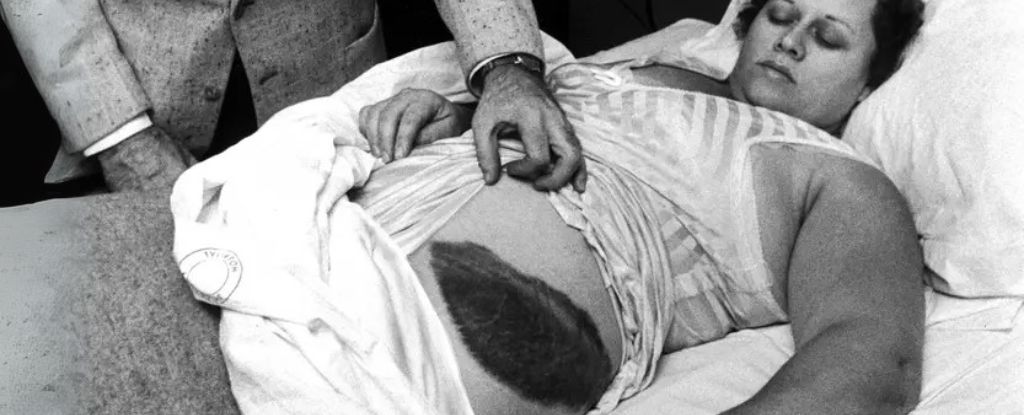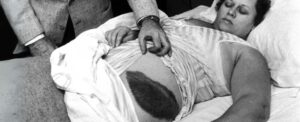
On November 30, 1954, Ann Hodges became the first documented person to be struck by a meteorite when a falling space rock crashed through her home in Sylacauga, Alabama. This remarkable event not only left Hodges with a bruised hip but also catapulted her into the national spotlight. More than 70 years later, her story continues to captivate audiences, illustrating the rare intersection of human life and cosmic phenomena.
The meteorite, known as the Sylacauga meteorite or the Hodges meteorite, likely originated from the asteroid 1685 Toro, which has been classified by NASA as a “Near Earth Asteroid.” This mid-sized asteroid, comparable in size to Manhattan, has a history that extends back approximately 4.56 billion years. When a piece of an asteroid enters Earth’s atmosphere, it transforms into a meteor, and if it survives the fall, it is classified as a meteorite.
On that fateful afternoon, locals in Sylacauga reported a bright streak in the sky, leading many to believe they were witnessing a plane crash. As the meteorite descended, Hodges, then 34 years old, was taking a nap on her living room couch. At precisely 14:46, the meteorite crashed through her roof, ricocheting off a radio before striking her hip. According to Mary Beth Prondzinski of the Alabama Museum of Natural History, this fortunate positioning likely mitigated the severity of her injuries.
Once the commotion subsided, neither Hodges nor her mother, who was in another room, initially understood what had occurred. “All she knew is that something had hit her,” Prondzinski explained. The meteorite weighed approximately 8.5 pounds and was identified as a chondrite, a type of stony meteorite composed of iron and nickel.
The meteorite was eventually found, leading to a flurry of local interest. Neighbors and law enforcement quickly gathered outside Hodges’ home, eager to witness the unusual event. A doctor and the police arrived shortly after the incident, with the mayor and police chief discovering the damage caused by the meteorite. The impact left Hodges with a large bruise on her hip, described as “grapefruit-sized.”
Despite her injuries not requiring hospitalization, Hodges was overwhelmed by the sudden attention and opted to go to the hospital due to her distress. Her husband, Eugene Hodges, returned home to find their house surrounded by curious onlookers, an unexpected consequence of his wife’s surreal accident.
The meteorite’s journey did not end with its impact on Hodges. The U.S. Air Force initially confiscated it to investigate its origin, suspecting it might be related to unidentified flying objects. Once confirmed to be a meteorite, Hodges faced a protracted legal battle with her landlord over ownership. The landlord, Birdie Guy, argued that the meteorite belonged to her since it fell on her property. After a year of litigation, the case was settled for $500.
Hodges’ story gained traction, making her an overnight celebrity. She participated in various media appearances, including a feature on the game show “I’ve Got a Secret.” Despite the attention, Hodges preferred privacy and did not engage with fan mail, leaving such matters to her lawyer. Ultimately, she donated the meteorite to the Alabama Museum of Natural History, asking only for reimbursement of her legal fees.
Her marriage to Eugene did not survive the fame that followed the meteorite incident. The couple divorced in 1964, partly due to differing views on monetizing the meteorite. Hodges passed away in a nursing home in 1972 at the age of 52, due to kidney failure.
The fascination with Hodges’ story persists. Recently, another meteorite incident occurred in McDonough, Georgia, where a man narrowly escaped being struck when fragments pierced his roof, missing him by 14 feet. This event highlighted the ongoing relevance of meteorite strikes, with researchers estimating that Earth experiences about 6,100 meteorite falls annually.
In exploring the rarity of such occurrences, astronomer Michael Reynolds remarked, “You have a better chance of getting hit by a tornado and a bolt of lightning and a hurricane all at the same time.” This perspective underscores the uniqueness of Hodges’ experience, which is appraised at over $1 million today.
As scientific interest in meteorites continues, the legacy of Ann Hodges remains a poignant reminder of the extraordinary events that can unfold in everyday life. The Alabama Museum of Natural History continues to field inquiries about her story, with potential adaptations in various media, including films and graphic novels, reflecting the enduring appeal of this remarkable tale.







